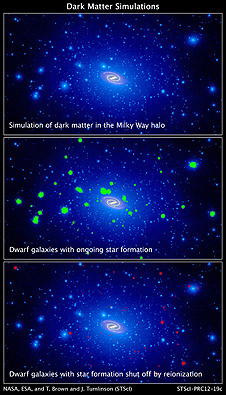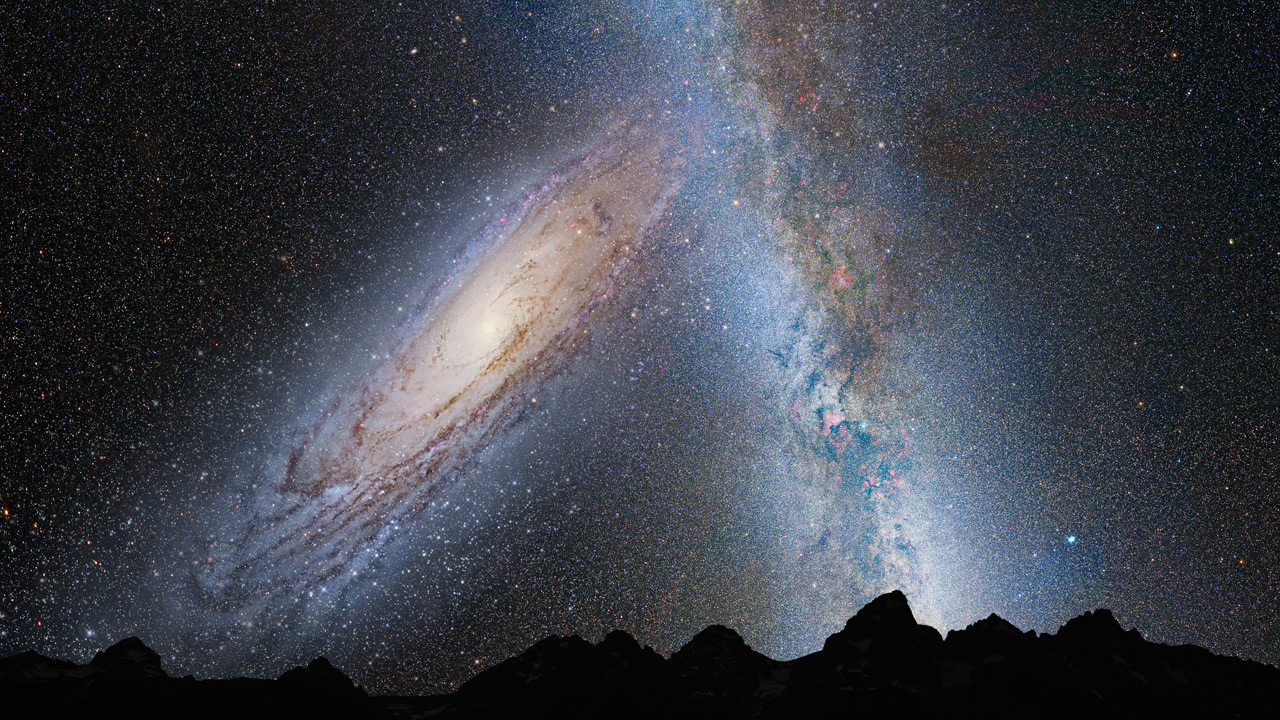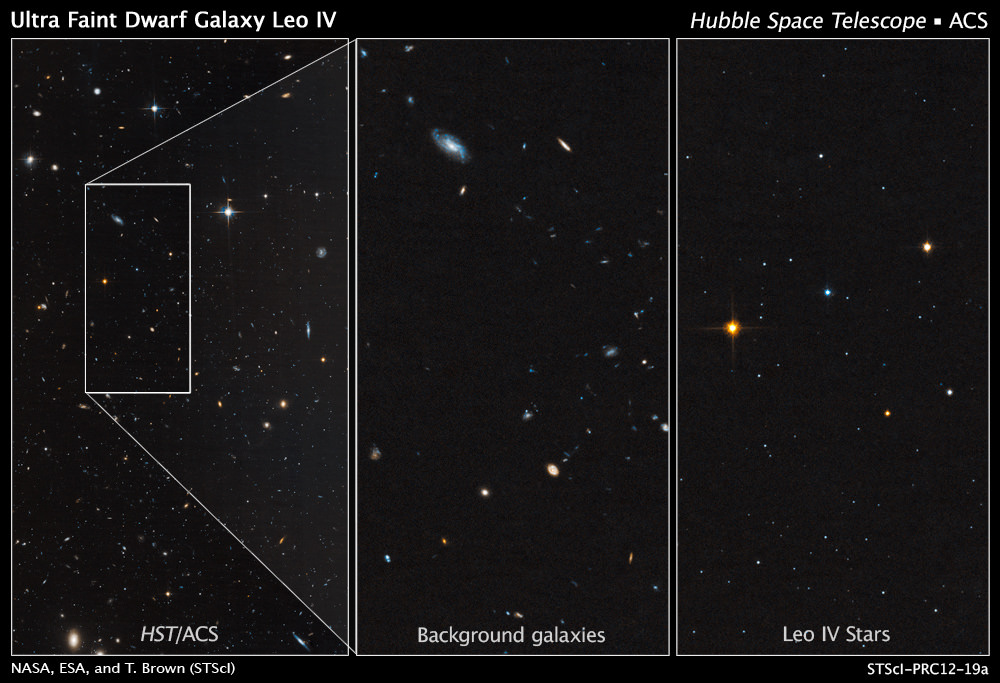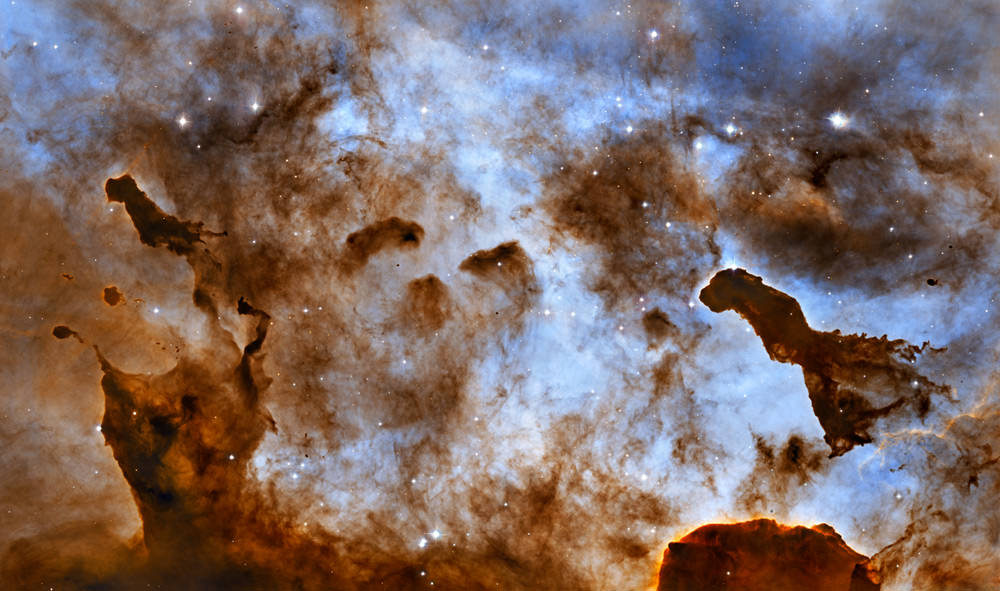They’re out there; tiny, extremely faint and incredibly ancient dwarf galaxies with so few stars that scientists call them ‘ghost galaxies.’ NASA’s Hubble Space Telescope captured images of three of these small-fry galaxies in hopes of unraveling a mystery 13 billion years in the making.
Astronomers believe these tiny, ghost-like galaxies spotted alongside the Milky Way Galaxy are among the oldest, tiniest and most pristine galaxies in the Universe. Hubble views reveal that their stars share the same birth date. The galaxies all started forming stars more than 13 billions years ago but then abruptly stopped within just one billion years after the Universe was born.
“These galaxies are all ancient and they’re all the same age, so you know something came down like a guillotine and turned off the star formation at the same time in these galaxies,” said Tom Brown of the Space Telescope Science Institute in Baltimore, Md., the study’s leader. “The most likely explanation is reionization.”
Reionization of the Universe began in the first billion years after the Big Bang. During this time, radiation from the first stars knocked electrons off hydrogen atoms, ionizing the hydrogen gas. This process also allowed hydrogen gas to become transparent to ultraviolet light. This same process may also have squashed star-making in dwarf galaxies, such as those in Brown’s study. These galaxies are tiny cousins to star-making dwarf galaxies near the Milky Way. And because of their small size, just 2,000 light-years across, they were not massive enough to shield themselves from the harsh ultraviolet light of the early Universe which stripped away their meager supply of hydrogen gas, leaving them unable to make new stars.
Astronomers proposed many reasons for the lack of stars in these galaxies in addition to the reioniation theory. Some scientists believed internal events such as supernovae blasted away the gas needed to create new stars. Others suggested that the galaxies simply used up their supply of hydrogen gas needed to make stars.
Brown measured the stars’ ages by looking at their brightness and colors. The stellar populations in these fossil galaxies range from a few hundred to a few thousand stars; some sun-like, some red dwarfs and some red stars larger than our Sun. When evidence showed that the stars were indeed ancient, Brown enlisted the help of Hubble’s Advanced Camera for Surveys to burrow deep within six galaxies to determine when they were born. So far, the team has finished analyzing data for three; Hercules, Leo IV and Ursa Major. The galaxies lie between 330,000 light-years to 490,000 light-years. For comparison, Brown compared the galaxies’ stars with those found in M92, a 13 billion-year-old globular cluster located about 26,000 light-years from Earth. He found they are of similar age.
“These are the fossils of the earliest galaxies in the universe,” Brown said. “They haven’t changed in billions of years. These galaxies are unlike most nearby galaxies, which have long star-formation histories.”
 Brown’s discovery could help explain the so-called “missing satellite problem.” Astronomers have observed only a few dozen dwarf galaxies around the Milky Way while computer simulations predict thousands should exist. But perhaps they do exist. The Sloan survey found more than a dozen tiny, star-starved galaxies in the Milky Way’s neighborhood while scanning just a portion of the sky. Astronomers think that dozens more ultra-faint galaxies may lurk undetected with the possibility of thousands of even smaller dwarfs containing virtually no stars.
Brown’s discovery could help explain the so-called “missing satellite problem.” Astronomers have observed only a few dozen dwarf galaxies around the Milky Way while computer simulations predict thousands should exist. But perhaps they do exist. The Sloan survey found more than a dozen tiny, star-starved galaxies in the Milky Way’s neighborhood while scanning just a portion of the sky. Astronomers think that dozens more ultra-faint galaxies may lurk undetected with the possibility of thousands of even smaller dwarfs containing virtually no stars.
The tiny galaxies may be star-deprived but they still have an abundance of dark matter, the framework upon which galaxies are built. Normal dwarf galaxies near the Milky Way Galaxy contain ten times more dark matter than ordinary visible matter. Brown explains that these tiny galaxies are now islands of mostly dark matter, unseen for billions of years until astronomers began finding them in the Sloan Survey.
Brown’s results appear in the July 1 issue of the Astrophysical Journal Letters.
Image caption 1: These Hubble images show the dim, star-starved dwarf galaxy Leo IV. The image at left shows part of the galaxy, outlined by the white rectangular box. The box measures 83 light-years wide by 163 light-years long. The few stars in Leo IV are lost amid neighboring stars and distant galaxies. A close-up view of the background galaxies within the box is shown in the middle image. The image at right shows only the stars in Leo IV. The galaxy, which contains several thousand stars, is composed of sun-like stars, fainter, red dwarf stars, and some red giant stars brighter than the sun. Credit: NASA, ESA, and T. Brown (STScI)
Image caption 2: These computer simulations show a swarm of dark matter clumps around our Milky Way galaxy. Some of the dark-matter concentrations are massive enough to spark star formation. Thousands of clumps of dark matter coexist with our Milky Way galaxy, shown in the center of the top panel. The green blobs in the middle panel are those dark-matter chunks massive enough to obtain gas from the intergalactic medium and trigger ongoing star formation, eventually creating dwarf galaxies. In the bottom panel, the red blobs are ultra-faint dwarf galaxies that stopped forming stars long ago. Credit: NASA, ESA, and T. Brown and J. Tumlinson (STScI)




